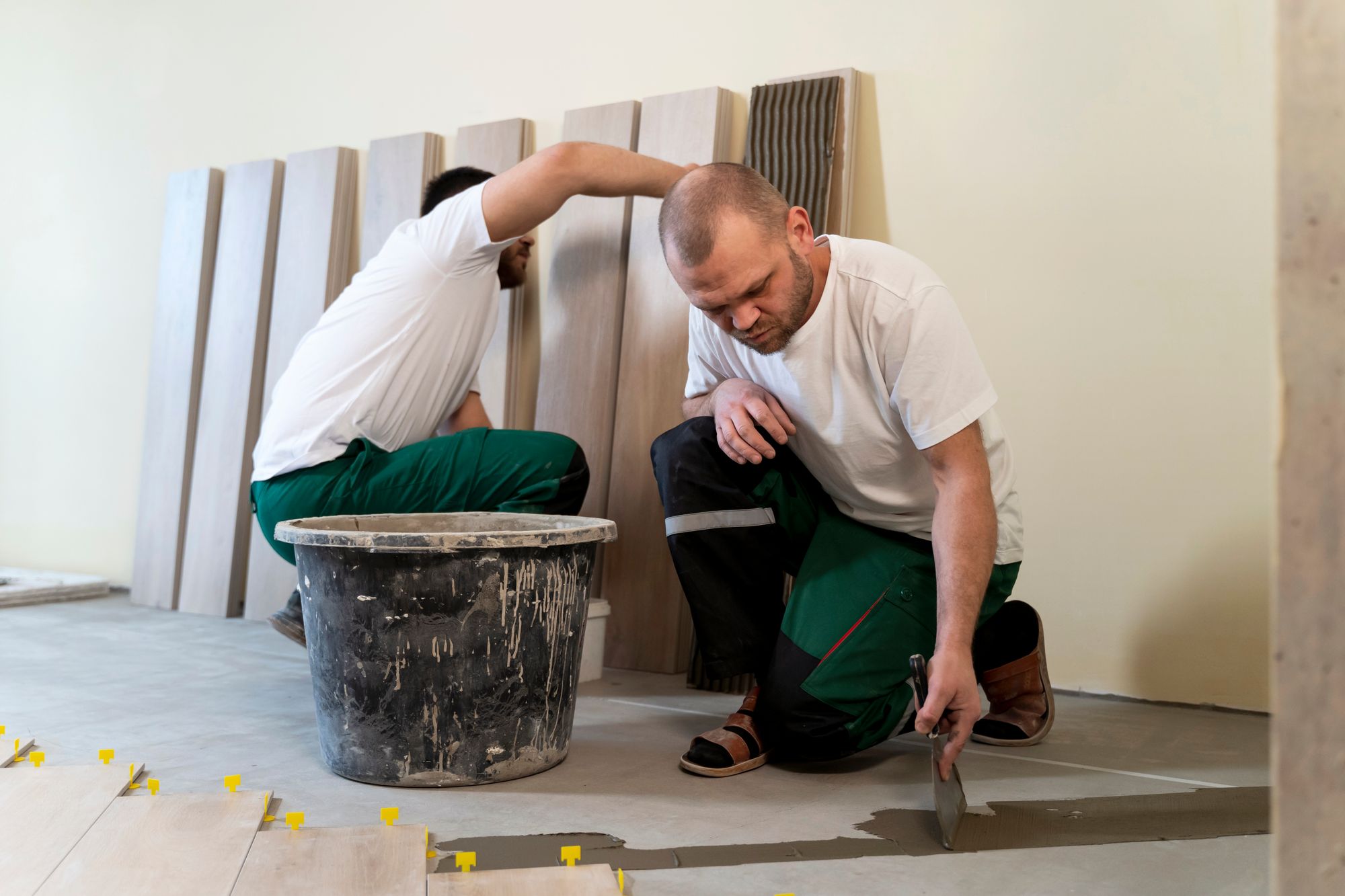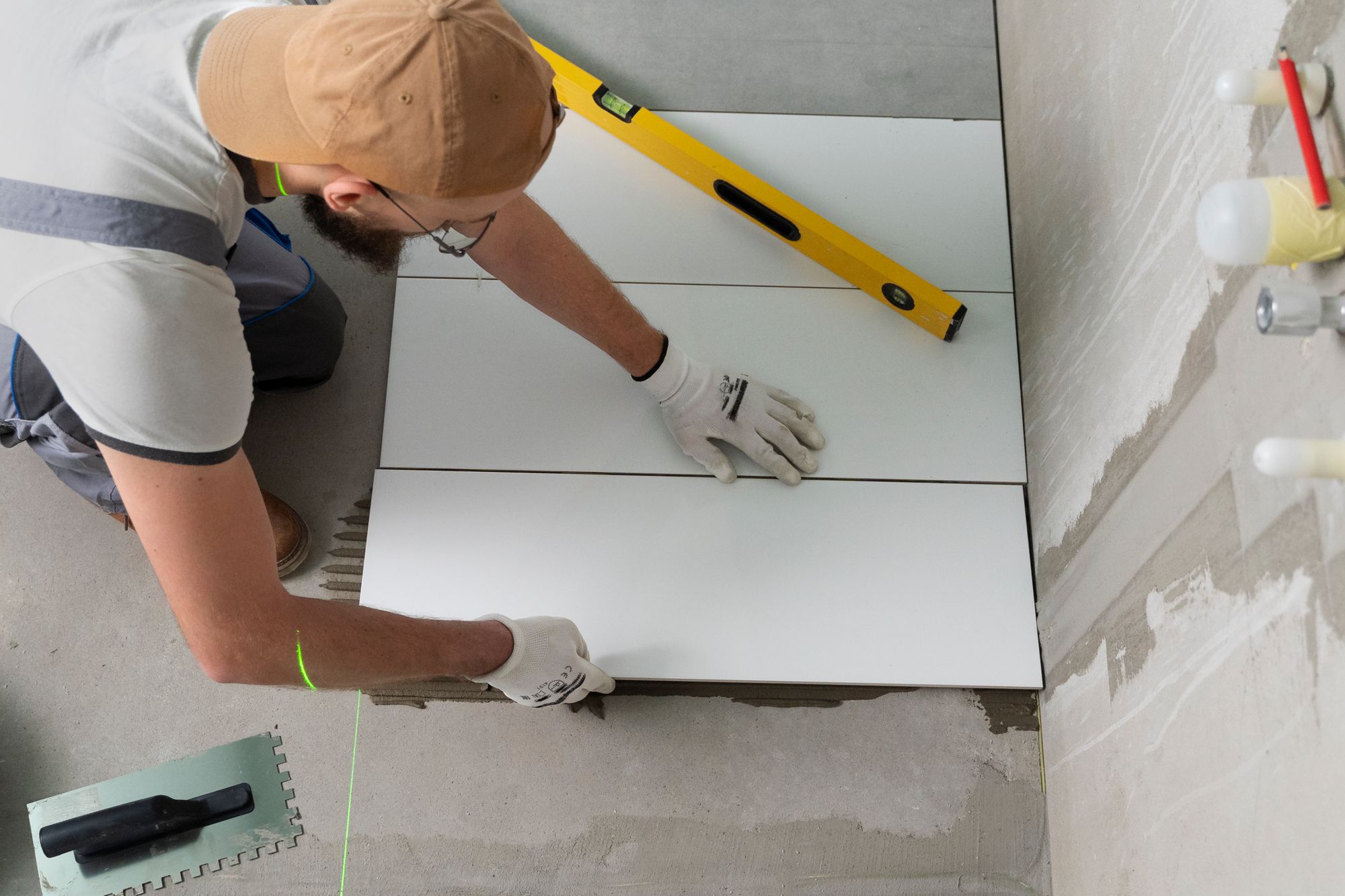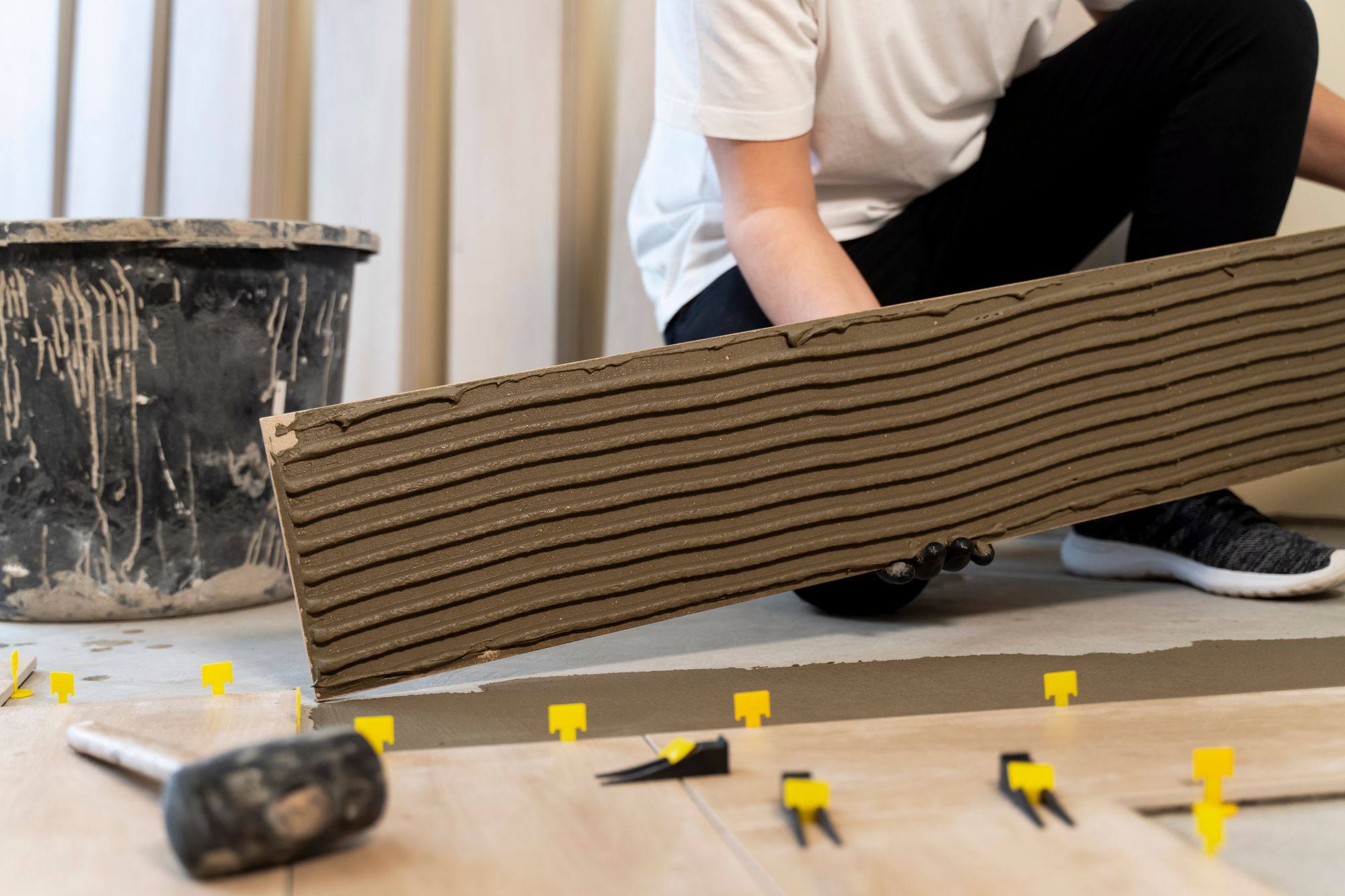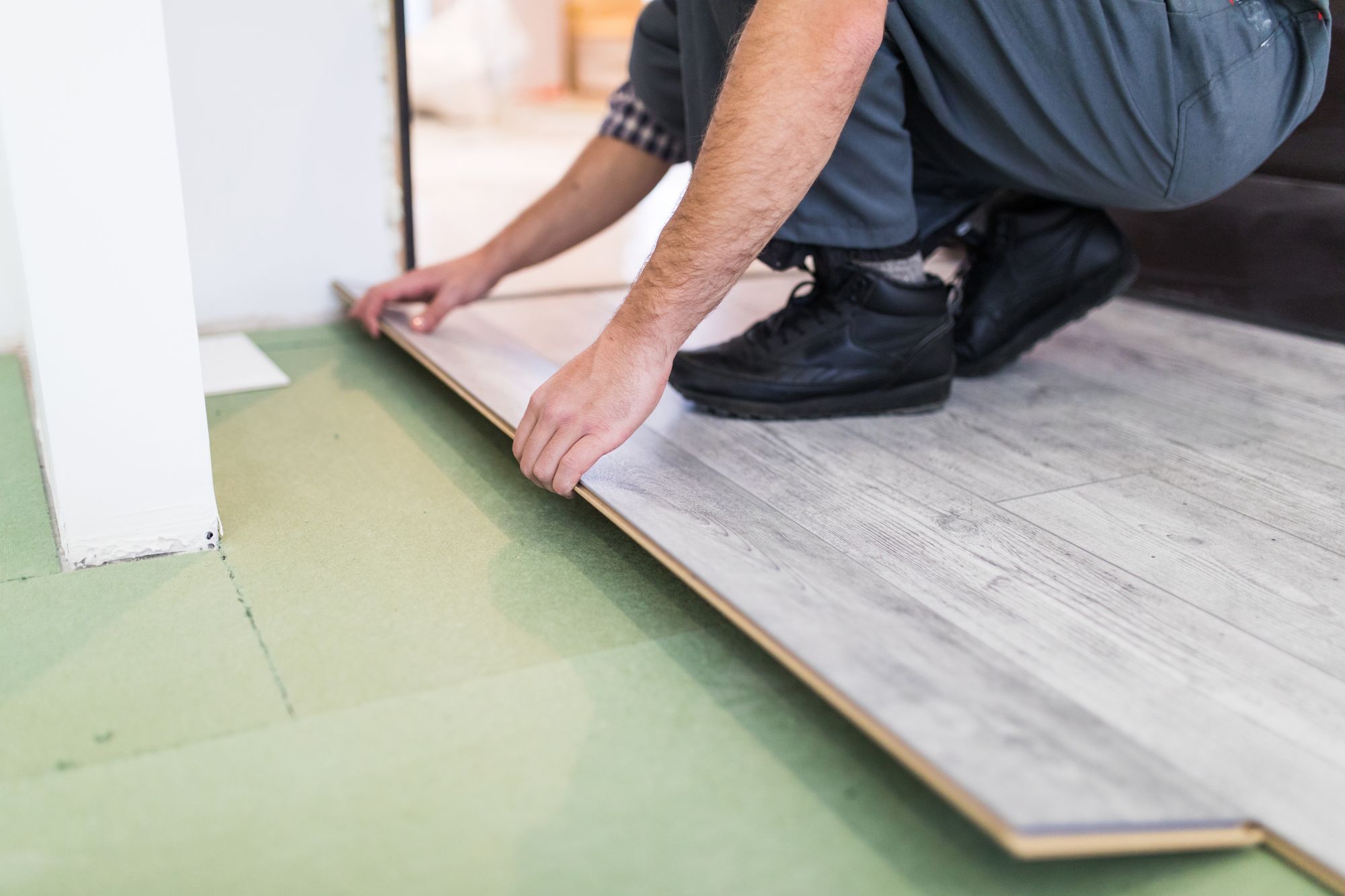Key Takeaways
- The right flooring choice significantly impacts your home's aesthetic appeal, functionality, comfort, and value.
- Due to advances in technology, flooring options now extend beyond traditional materials to include man-made types that mimic the look and feel of natural ones.
- When selecting flooring, consider factors such as durability, maintenance, cost, and lifestyle needs. For instance, high-traffic areas require resilient flooring, while comfort might be a priority in bedrooms or living rooms.
- Flooring materials come in different grades, each offering varied levels of quality, durability, and price points.
- Making an informed flooring choice involves understanding the pros and cons of each material and aligning them with your specific needs and preferences.
Introduction
Is your current flooring showing signs of wear, or are you planning a home renovation? The right flooring choice can increase your home's value by up to 5% while creating the perfect aesthetic for your space.
With the average American homeowner spending $2,800 to $7,000 on new flooring installation, making an informed decision is crucial.
Today's market offers more options than ever - from classic hardwood starting at $8 per square foot to innovative eco-friendly materials like bamboo at $5-10 per square foot.
Whether you're upgrading your high-traffic kitchen that sees 15+ daily crossings or creating a cozy bedroom retreat, this guide will help you navigate the choices.
We'll break down the latest flooring trends, compare costs and durability, and show you how to maximize your investment with the right financing options. Let's help you find the perfect flooring solution for your home and budget.
Man-Made Flooring Materials: Smart Solutions for Modern Homes
In 2025, man-made flooring materials account for 65% of all residential flooring installations in the US, with good reason.
These innovative solutions offer remarkable durability at a fraction of the cost of natural materials.
For example, luxury vinyl planks that perfectly mimic oak hardwood cost $4-7 per square foot, compared to genuine oak at $12-15 per square foot.
Recent advancements in manufacturing technology have created synthetic options that are nearly indistinguishable from their natural counterparts:
- Porcelain tiles replicating Calacatta marble ($6-10/sq ft vs. $40-50/sq ft for real marble)
- Laminate flooring with authentic wood grain textures ($3-7/sq ft)
- Vinyl stone-look tiles with built-in waterproofing ($5-8/sq ft)
These materials aren't just cost-effective; they're engineered to outperform natural materials in durability, with many options carrying 20-25 year warranties and resistance to scratches, stains, and moisture.

Benefits and Drawbacks of Man-Made Materials
Man-made materials have their unique set of advantages and disadvantages that make them suitable for different uses and environments.
Whether you are renovating your home or building a new one, understanding these pros and cons is crucial in making an informed decision.
Benefits:
- Durability: Many synthetic materials are designed to withstand heavy foot traffic, making them ideal for high-traffic areas in homes and commercial spaces.
- Variety: Man-made materials come in a wide array of colors, patterns, and styles, allowing for greater customization to suit individual preferences.
- Maintenance: Compared to natural materials, many synthetic options are easier to clean and maintain, which can save time and effort in the long run.
- Cost-Effective: Generally, man-made materials are less expensive than their natural counterparts, offering a cost-effective solution for those on a budget.
Drawbacks:
- Environmental Impact: The production of some synthetic materials can have a negative impact on the environment, contributing to pollution and waste.
- Lack of Authenticity: Despite their ability to mimic natural materials, synthetic options may lack the unique characteristics and warmth that come with natural materials.
- Potential Health Risks: Some synthetic materials may release volatile organic compounds (VOCs) into the air, which can cause health issues over time.
Popular Man-Made Flooring Options
The synthetic flooring market has grown by 23% since 2023, offering homeowners budget-friendly alternatives that combine style with practicality. Let's explore the top options with real costs and performance data:
- Laminate Flooring ($2.70-$5.50 per square foot)
Today's laminate flooring can withstand up to 25 years of regular use when properly maintained. Here's what you need to know:
Advantages:
• 300% more scratch-resistant than natural hardwood
• DIY installation saves $2-4 per square foot in labor costs
• 15-25 year warranties standard
• Withstands 1,500+ foot traffic instances per week
Real-Life Example: The Johnson family in Denver installed QuickStep Impressive Ultra laminate throughout their 1,500 sq ft home for $6,750 total ($4.50/sq ft), saving $12,000 compared to hardwood. After 2 years of use with 2 kids and a dog, the flooring shows minimal wear.
- Luxury Vinyl Flooring (LVF) ($4-$7 per square foot)
The fastest-growing segment in flooring, with a 35% market share increase since 2023.
Key Features:
• 100% waterproof construction
• Withstands temperatures from -20°F to 150°F
• 20+ year lifespan with proper care
• Available in 1,000+ style variations
Customer Success Story: Sarah Martinez, a Miami restaurant owner, installed Armstrong Luxe Plank throughout her 2,000 sq ft establishment. After 18 months of heavy commercial use (500+ daily customers), the flooring maintains its appearance with only routine cleaning.
Pro Tip: Many manufacturers offer free samples - request 3-4 options and test them in your space for 48 hours to see how they perform under different lighting conditions and foot traffic.

- Ceramic and Porcelain Tile (2025 Update)
Average Cost: $3-$8 per square foot for ceramic, $5-$12 for porcelain
Installation: $5-$10 per square foot
Total Project Cost Example: $2,400-$5,400 for a 300 sq ft kitchen
Performance Metrics:
• Lifespan: 50+ years with proper maintenance
• Water absorption rate: Less than 0.5% for porcelain
• Breaking strength: Up to 450 pounds per square inch
• Temperature resistance: Can withstand up to 2000°F
Real-World Durability Example:
The Boston Public Library installed Daltile porcelain tiles in their main entrance in 2020. After 5 years and 2 million+ visitors annually, the tiles show minimal wear and have required only standard cleaning maintenance.
Cost-Saving Installation Tip:
Installing larger format tiles (18"x18" or bigger) can reduce labor costs by 20-30% due to fewer pieces and less grout work.
Maintenance Cost Breakdown:
- Professional grout sealing: $200-$400 every 2-3 years
- Daily cleaning: $50-$75 annually for specialized cleaners
- Grout restoration: $300-$500 every 5-7 years
Popular Applications and ROI:
- Bathroom floors: 85% ROI on renovation
- Kitchen floors: 75% ROI
- Entryway: 70% ROI
Pro Tip: For high-traffic areas, choose porcelain tiles with a PEI rating of 4 or 5. These ratings indicate the highest durability levels and are suitable for commercial and residential use.
Types of Flooring Materials and Their Certified Grades
Flooring plays a pivotal role in determining the ambiance, comfort, and functionality of your living space. The multitude of flooring materials available today cater to various needs, ranging from durability and cost to aesthetics and sustainability. It's crucial to understand the different types of flooring materials and their certified grades, which indicate the quality and performance of these materials.
1. Hardwood Flooring
Hardwood flooring is a favorite for its natural beauty and durability. It's available in a variety of species like oak, maple, and walnut. The National Wood Flooring Association (NWFA) provides grading for hardwood flooring based on the number and size of knots, color consistency, and other natural characteristics.
2. Laminate Flooring
Laminate flooring replicates the look of hardwood but at a fraction of the cost. It's durable and easy to install. Laminate flooring is graded by the European Producers of Laminate Flooring (EPLF) based on factors like resistance to abrasion, impact, stains, and burning.
3. Vinyl Flooring
Vinyl flooring is water-resistant and durable, making it perfect for kitchens and bathrooms. Vinyl flooring comes in various styles mimicking wood, stone, or tile. ASTM International sets the standards for vinyl flooring performance.
4. Tile Flooring
Tile flooring, often made from ceramic or porcelain, is highly durable and water-resistant. The Porcelain Enamel Institute (PEI) rates tiles based on their suitability for different usage levels, from light to heavy traffic.
5. Carpet Flooring
Carpets provide warmth and sound insulation. They come in a variety of colors, textures, and patterns. The Carpet and Rug Institute (CRI) provides a grading system that includes performance ratings and indoor air quality testing.
6. Bamboo Flooring
Bamboo is an eco-friendly flooring option, known for its durability and unique aesthetics. The hardness and quality of bamboo flooring can differ based on the manufacturing process. There's no universal grading system, but generally, the longer the bamboo matures before harvesting, the harder and more durable the flooring.
7. Cork Flooring
Cork is a sustainable, comfortable, and insulating flooring material. The quality of cork flooring is often determined by its density and thickness, but there isn't a universal grading system.
8. Stone Flooring
Stone flooring, including granite, marble, and slate, is natural, durable, and unique. The Marble Institute of America (MIA) provides a grading system for natural stone, which includes factors like absorption rate, density, and flexural strength.
Understanding the types of flooring materials and their certified grades is crucial in making an informed decision about the right flooring for your needs.
Whether you prioritize durability, cost, aesthetics, or sustainability, there is a flooring material to suit your needs, ensuring the longevity and comfort of your living space.

Detailed Comparison of Different Flooring Materials:
When choosing flooring for your home or office, it's important to understand the strengths and weaknesses of each material.
Here is a detailed comparison of different flooring materials to help you make the best decision for your space.
| Flooring Material | Pros | Cons | Cost |
|---|---|---|---|
| Hardwood | Adds a warm, classic look to your space. Can be refinished multiple times. | Can scratch easily. Not ideal for areas with high moisture. | $3-$5 per square foot for softwoods. $5-$10 for hardwoods. |
| Engineered Wood | More stable than solid hardwood. Can handle moisture better. | Can only be refinished once or twice. | $4-$10 per square foot. |
| Laminate | Resistant to scratches and stains. Wide variety of designs. | Can't be refinished. Can look synthetic. | $1-$5 per square foot. |
| Vinyl | Water and stain-resistant. Comfortable underfoot. | Can tear and dent over time. Difficult to repair. | $2-$8 per square foot. |
| Ceramic Tile | Very durable. Available in many styles. | Can be cold and hard underfoot. Grout can stain. | $1-$20 per square foot. |
| Porcelain Tile | More durable than ceramic. Can be used indoors and outdoors. | Installation can be challenging. Can be expensive. | $3-$10 per square foot. |
| Linoleum | Eco-friendly. Durable and easy to clean. | Can dent easily. Color may fade with sunlight. | $2-$5 per square foot. |
| Bamboo | Eco-friendly. Similar look to hardwood. | Can scratch and dent over time. | $5-$7 per square foot. |
| Cork | Comfortable underfoot. Good insulator. | Can fade and discolor. Requires regular sealing. | $3-$8 per square foot. |
| Carpet | Warm and soft underfoot. Excellent sound absorption. | Can trap dirt and allergens. Not suitable for wet areas. | $2-$7 per square foot. |
How to Choose the Right Tile for Your Home
Choosing the right tile for your home is more than just finding a style you like; it involves considering a variety of factors to ensure the tile not only looks good but also serves its purpose effectively.
Here's a detailed guide to help you navigate the process, along with a FAQ section to address common concerns.
Step-by-Step Selection Guide
- Assess the Area of Installation: Determine where the tile will be installed (bathroom, kitchen, living area) to understand the requirements related to moisture resistance, foot traffic, and slip resistance.
- Choose the Right Material: Options include ceramic, porcelain, glass, and natural stone. Porcelain is known for its durability and moisture resistance, making it suitable for bathrooms, while glass tiles are ideal for backsplashes due to their aesthetic appeal.
- Consider Tile Size and Shape: Larger tiles can make a small room appear bigger, and unconventional shapes (hexagons, chevrons) can add a unique touch to your space.
- Color Coordination: Consider the color scheme of the room. Neutral colors offer flexibility, while bold colors can make a statement. Light colors can make a room feel more spacious, and dark colors add warmth and hide dirt.
- Pattern Matching: Decide if you want a uniform look or a patterned design. For patterns, ensure that the tiles can be laid out correctly and that you have extra tiles for cutting and fitting.
- Think About Finish: Glossy tiles are easy to clean but can be slippery when wet, making them less ideal for bathrooms. Matte finishes are better for floors in high-moisture areas.
- Durability Needs: Consider the PEI rating for ceramic and porcelain tiles to assess their ability to withstand wear. Higher PEI ratings are better for high-traffic areas.
- Maintenance Requirements: Some materials require more upkeep than others. Porcelain and ceramic are low maintenance, while natural stone may require sealing to prevent stains.
FAQ Section
- Q: How do I know if a tile is suitable for floor or wall installation?
- A: Check the tile's specifications. Floor tiles are thicker and more durable, while wall tiles are lighter and may not withstand foot traffic.
- Q: Can I use the same tile for floors and walls?
- A: Yes, but ensure the tile is rated for floor use to handle the wear and tear.
- Q: How many extra tiles should I purchase?
- A: It's recommended to buy 10-15% more tiles than you need to account for cuts, breakage, and future repairs.






